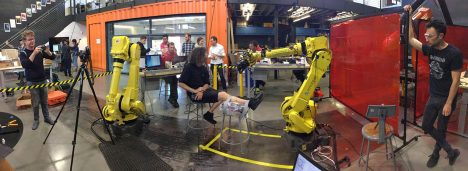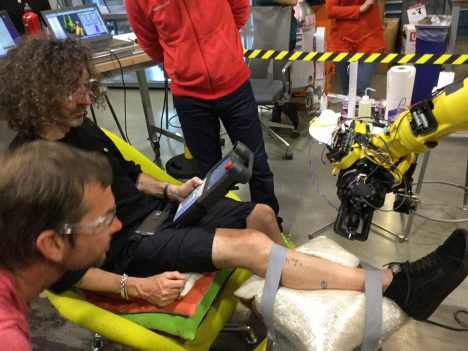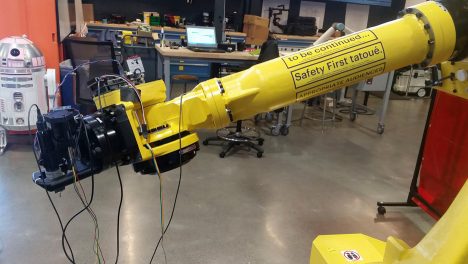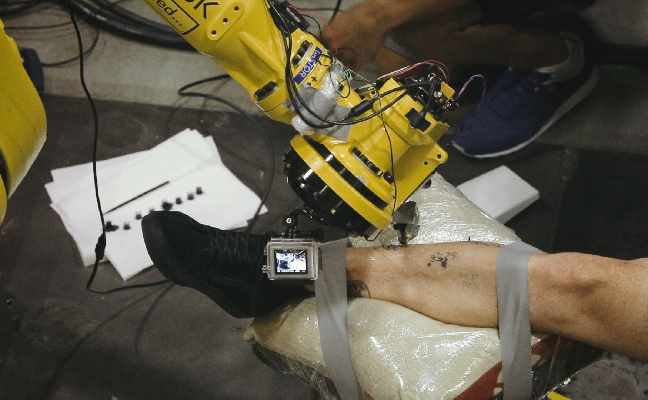An industrial robot has tattooed a person’s leg for what the designers claim is the first time in history (+ movie).
The Fanuc M-710iC robot, more commonly used in the automotive industry, was programmed to tattoo a spiral shape onto the lower section of a man’s leg.

Appropriate Audiences, the French design team behind the project, are calling it “the world’s first tattoo by an industrial robot”. Together with engineering researcher David Thomasson, they modified the robot to put a tattoo gun on the end of its arm.
“Immediately we were thinking along the same lines, and we wanted to see a big mean industrial machine doing this subtle interaction with a human,” said Thomasson, who worked alongside the team at an artists in residence programme headed up by software company Autodesk.

“Our research focused on this intimate relationship people will have with machines in the not so distant future, and this project is really pushing that to the limits,” he added.
After rigorous health and safety checks and experiments on fake flesh and body parts, an Appropriate Audiences team member was strapped into the chair to be tattooed.
The team first 3D-scanned his lower leg to analyse how deep the needle could penetrate. They then inputted the scan into Autodesk’s Dynamo software – a programming environment that lets designers visualise parametric, conceptual designs and to automate tasks.

The code produced through the software was exported to create a set of instructions for the robot. Its arm pierces the skin according to the dictated pattern, while simultaneously washing the wound in an ink bath to make the design permanent.
Before taking part in the artist in residency programme, the Paris design studio combined a 3D printer with a tattooist’s needle to form an automated tattoo “printer”.
“Anything you want can be designed on the computer, and replicated onto the skin. We are still working to develop the software in order to produce something that is more user-friendly, particularly for tattoo artists,” the team told Dezeen at the time.
As robotic technology advances, machines are more frequently being used for jobs and tasks once carried out by humans.























